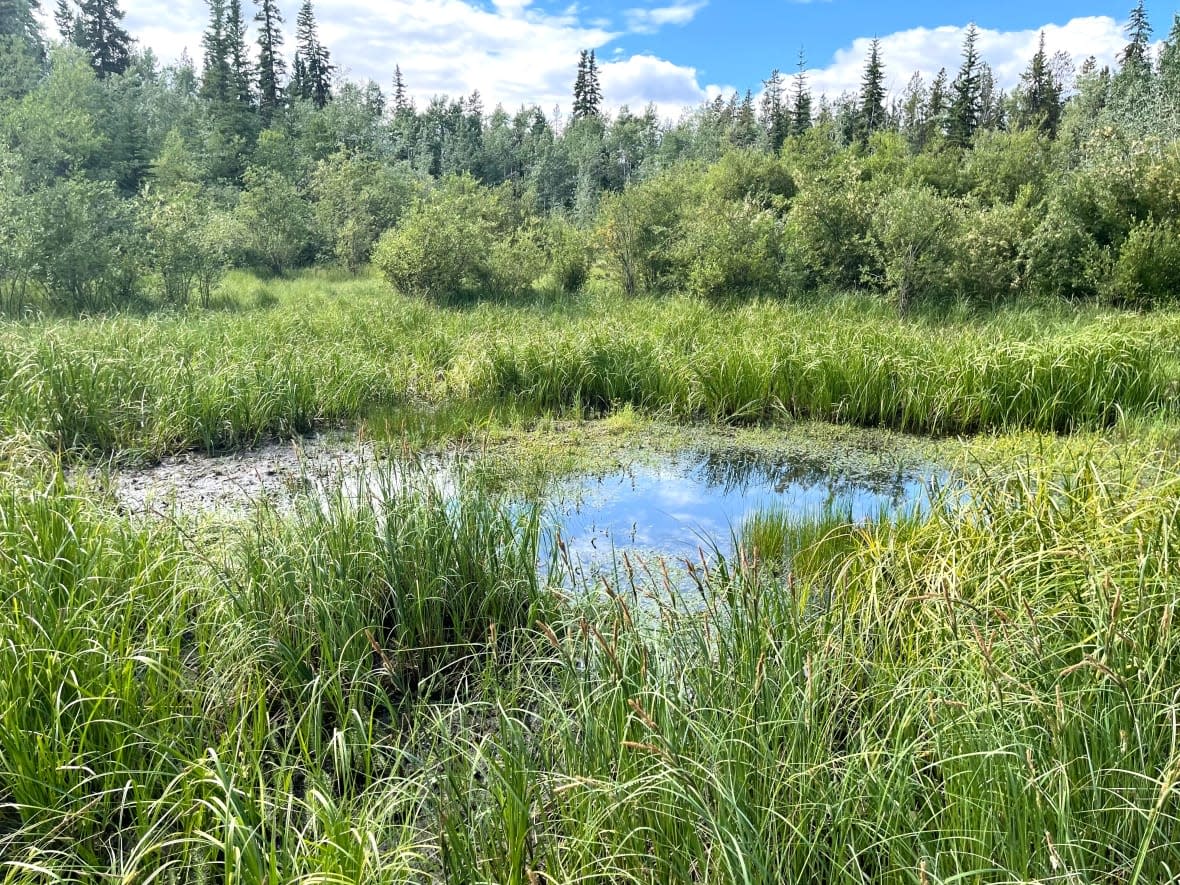Yukon government lays out new rules to protect sensitive wetlands

The Yukon government has unveiled a new wetlands policy, which leaders say will help steward some of the most ecologically-sensitive areas the territory has.
The policy document, presented on Tuesday, sets guardrails for how development operates in and around wetlands, which include fens, bogs and marshes.
Environment Minister Nils Clarke said the policy is intentionally broad, covering all sectors and any land disposition that can affect wetlands
"I hope to see broader adoption of the principles set out within this policy that will help achieve clear and consistent decision-making for all human activities in wetlands," he said.
The policy has four central guidelines. Any development that could affect wetlands is best avoided by, among other things, either moving the project elsewhere or cancelling it altogether, the policy states. If that can't happen, sectors need to minimize impacts through modification — for instance, reducing levels of pollution. Then, reclamation work would be the next step.

If development permanently damages wetlands to the degree they cannot be restored, the policy states "additional mitigation measures to offset losses may be required," adding this should only be an option when all others have been exhausted.
Tyler Kuhn, a Yukon government habitat biologist, said the policy's aims are simple.
"It's to ensure that the benefits of Yukon wetlands are sustained and that we are working to try and foster responsible and sustainable development that can help us to maintain these benefits within the territory," he said.

The policy also commits the government to doing more research, including mapping wetlands across the territory and creating an inventory of those areas within the next five years.
'Huge win'
Not all wetlands are the same — some are rare, some help purify water or are home to at-risk species. The policy appears to recognize that some wetlands are just exceptional, ecologically. Based on certain characteristics, some wetlands could receive legally-designated protection.
If a wetland is nominated for protection, the government will consider things like whether the wetland is of high cultural importance to First Nations or is a significant carbon reservoir.
Proposed development wouldn't necessarily be off-limits in those areas. Instead, companies would need to show the government that valuable wetland features won't be damaged or forever lost.
If companies do get the go-ahead to develop those areas, they would be subject to a raft of conditions, including that proposed activities won't affect hydrology in the area or affect the original form of a wetland.
The policy states existing tenure won't be affected.
Sebastian Jones, wildlife analyst with the Yukon Conservation Society, told CBC News that part of the policy is a "huge win."
"It provides for a buffer zone around wetlands, so that wetlands are protected from activity close to them, as well," Jones said.

"The proof will be in the pudding," he added. "How possible it is to actually nominate and create a wetland of special importance remains to be seen."
While Jones believes that the new policy is sound overall, there's one thing that concerns him about the section dealing with the prospect of designated wetland areas: it doesn't acknowledge that some types of wetland might warrant greater protection.
"Bogs and fens are basically impossible to restore on any meaningful, human timeframe, so they really should get a higher degree of protection than, say, a pond, which can be relatively easily recreated," Jones said.
"It doesn't really get into that, in the policy, and I think that's a bit of a miss."
The Klondike Placer Miners Association (KPMA) also welcomed the release of the new policy, saying in a statement that industry can support and contribute to research about wetlands. The organization also acknowledged there are "polarizing beliefs" about the placer mining industry.
"We believe that transparent science-based data collection and sharing will be crucial to understanding what is happening, what is not happening, what is possible, and tangible ways to do things better," reads an emailed statement from the KPMA board.
"Without this evidence, it is difficult to achieve meaningful action without unexpected outcomes to the social-economic fabric of the Yukon."


